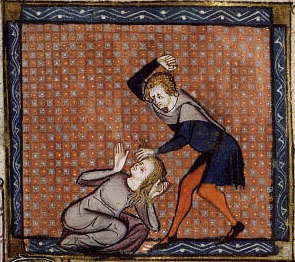- Chronologically, it stands as a continuation of the range of writers considered in McWebb's anthology. Taken together, the two projects highlight the varieties of intellectual and literary debate stimulated by the Rose throughout the later medieval period (late fourteenth to early sixteenth centuries). Swift's anthology intentionally picks up in the era after Christine de Pizan, a period of predominantly male authors writing in defence of women who have been relatively neglected by modern criticism given the existence of Christine as a woman defending women.
- Critically, the two projects facilitate fascinating comparative reading of different writers' concerns when engaging with the Rose. Through a system of labelling the extracts in relation to each project, it will be possible to compare which sections of the Rose are tackled by different writers, and reference back to the anthologies will reveal the various ways in which these shared extracts are treated, the contexts in which they are enlisted, etc.
- Iconographically, the date range spanned by both projects will enable patterns of Rose illustration to be traced from manuscript into print. The electronic text of the extracts will be punctuated with images illustrating each controversial section. Images will be drawn from across the period, from the earliest illustrated manuscripts to the latest-known early printed edition of the Rose in 1538.


Women and the 'Rose': reading the 'Roman de la rose' in the querelle des femmes (Helen Swift, St. Hilda's College, Oxford University)
One of the most consistent and significant features of literary defences of women composed between 1440 and 1538 is their engagement with Jean de Meun's portion of Le Roman de la rose [highlight title to link to CMcW's section explaining the Rose?] in order to express opposition to the author's alleged misogyny, lewd sexuality, and immoral use of language. In the varied and imaginative nature of these engagements, we find arguably the most dynamic literary activity of the querelle, from juridical fictions constructed to put on trial Jean de Meun himself (often alongside his supposed misogynist counterpart, Matheolus), to detailed blow-by-blow refutations of the Rose's arguments, to inventive transformations of characters or episodes featured in the Rose that are designed to recuperate its fallen poetics. The literary defences in question thus appear to some degree obsessed with the Rose in a manner that creates an intriguing, double-bound relationship: in order to be able to reject the Rose or refute its arguments, each defence must first of all acknowledge some engagement with this work, whether this entails having a character entertain the words of the misogamous Jealous Husband or necessitates a re-writing of the Rose's controversial conclusion. One cannot transform Jean de Meun's masterpiece without first repeating it, recognizing a literary indebtedness to its structures.

The complex hermeneutic manoeuvres these different engagements involve are as yet little appreciated since the defences themselves are either only available as individual works (such as Robert Deschaux's welcome edition of Martin Le Franc's Le Champion des dames) or are not yet available in modern editions (such as Jacques Milet's La Forest de tristesse or the anonymous Giroufflier aulx dames). The current project seeks to remedy this by assembling a corpus of defences that are particularly Rose-obsessed as a critical anthology, enabling the reader to make comparisons across texts, considering issues such as how Jean de Meun 'in person' is addressed, how the Rose's cast of personified characters is recycled and revised, how crucial moments in the tale are extracted for scrutiny and/or adapted to fit a new agenda, how certain key speeches are rehearsed, and how the narrative framework of Rose is transformed.
The anthology, provisionally entitled Les Femmes et la 'Rose', XV-XVI siècles and intended as a paper publication, builds on work of literary criticism undertaken in my book on the broader querelle, not just its intersections with the Rose: Gender, Writing, and Performance: Men Defending Women in Late Medieval France (1440-1538) (Oxford: OUP, 2008). The anthology will feature a range of defences, but will not include extracts from the Rose itself. MARGOT will enable pertinent extracts from the Rose to be read in conjunction with the anthology such that the defences' intricacies of intertextual engagement may be appreciated and explored to their full extent.
This project may be viewed as an independent study of Rose reception within a specific context, but may also, more fruitfully, be considered conjointly with Christine McWebb's project Debating the 'Roman de la rose', in three principal ways:
